Those of you who have been reading this narrative are aware that I have been falling further and further behind in keeping up the “blog” of my 2019 Peregrination “Big Year”. Sadly, today marks a milestone: I am now over one YEAR behind! I will continue to document my birding year, catch up with my photographs and records, and so forth. When I finally “finish” 2019, I have plans to turn this “blog” into a more informative page, regarding birds, bugs, fish, plants, geology, and whatever natural history topics rattle my cage. Thanks for reading so far!
November 8, 2019:
I was able to sleep in for an extra half-hour, before loading up for the 6:30 a.m., Rio Grande Valley Birding Festival Trip to the Edinburg Wetlands and Quinta Mazatlán preserve.
Our trip leaders included Angelina Vasquez, a Valley native who is currently a supervisor at the McAllen Nature Center, and who was kind of quiet but was really good about getting birders on the birds.Dave Irons and Shawneen Finnegan from Beaverton, Oregon are great trip leaders, and I really enjoy birding with them; Dave can be a welcome ‘taskmaster’ when he’s moving a group of 40 birders and trying to keep on a schedule.John Brush is a local, the Urban Ecologist at Quinta Mazatlán World Birding Center, has done a lot of bird banding, and was also pretty darned good at getting his scope on birds for the group.Jorge Montejo guides tours to El Triunfo and other Biosphere reserves in Mexico, was an excellent spotter, and had sharp ears.The Birding Festival has some really top-notch trip leaders!!We stopped first at the wetlands first to walk around the ponds. Edinburg Scenic Wetlands has large ponds and smaller water features, birding trails, feeding areas, butterfly gardens, observation platforms and an interpretative center set in some 40 acres of native vegetation and wetlands.
We had great views of a pair of Ringed Kingfishers, as well as hybrid Mottled X Mallard and domestic Muscovy-type ducks. There was a nice bit of activity at their bird feeders.
At the feeders as well as at some planted flowers, we were treated to a view of a Buff-bellied Hummingbird for my ABA Life Bird No. 658.

Our next stop was at Quinta Mazatlán, a wonderfully restored historical Adobe hacienda.
The old building is surrounded by 15 acres of sub-tropical gardens and native woodlands with birding trails, feeding stations and water features in McAllen, Texas.There, we searched for a Pauraque, and one of the women from our bus found one just about 10 feet off the sidewalk behind a hedge, and everyone got great looks at it.This nightjar forages at night in open areas, including quiet roads, catching night-flying beetles, its main prey, by “jumping” from the ground into the air to snatch these slow-flying insects.The Pauraque was my ABA Life Bird No. 659.Besides the habitat features and the great birding here, the Preserve does a good job with their interpretive exhibits.Back at the Convention Center, I had a quick lunch and strolled around the vendors’ booths, then caught a short nap.
This evening I went out with a Festival van driven by
Erik Ostrander and Hannah Buschert who hail from Cannon Beach, Oregon to look
for parakeets and parrots in Harlingen. These trips are always popular, since the Rio Grande
Valley is the only place in the U.S. where one can see "countable"
populations of these two Parrots in Texas.
We drove through the local neighborhoods and stopped at the corner of Sam Houston and 77 Sunshine Strip, where about two dozen Green Parakeets were flying around the area and were landing on rooftops and in some palm trees.
We continued to another neighborhood at North Third and Davis, where there were a couple hundred Red-crowned Parrots being watched by other vanloads of birders.
The birds were feeding on the fruits of a tree that one of the locals called the “Toothache Tree”, which appears to be Zanthoxylum clava-herculis, the Hercules' club, or southern prickly ash.Mixed into the flock were some Lilac-crowned Parrots and a few Red-lored Parrots, as well as an individual that had a lot of yellow in the head. There was discussion whether this bird had some Yellow-headed genetics in it, or if it was a Red-crowned that had yellow, rather than red (or some other aberrant coloration) in its crown.If you look at the list of my bird species seen this year, you’ll see that I did “number” the sightings of the Red-lored and Lilac-crowned Parrots. These species are on my eBird list because I’d seen the Lilac-crowned Parrot and Red-lored Parrot mixed in with the Red-crowns, but they aren’t “ABA-countable” since they’re not yet considered “established exotic species.” I’ve been pretty much following the somewhat arbitrary “rules” of the American Birding Association. The TexasBird Records Committee has not chosen to give its “official” blessing on the status of these exotic species, which would lead to their inclusion on the ABA Checklist. I’ll not add these to my “ABA Life List”, but it was pretty special seeing these birds and a challenge to identify them amongst the horde of parrots.After we returned, I stayed to listen to Pete Dunne give a talk on the early days of the World Series of Birding Big Day competitions, and some of the ‘war stories’ he had were pretty darned entertaining. "The World Series of Birding – Stories Behind the Story, Now It Can Be Told"
Edinburg Wetlands eBird checklist is Here
Quinta Mazatlán eBird checklist is Here
Green Parakeet spot eBird checklist is Here
Red-crowned Parrot spot eBird checklist is Here


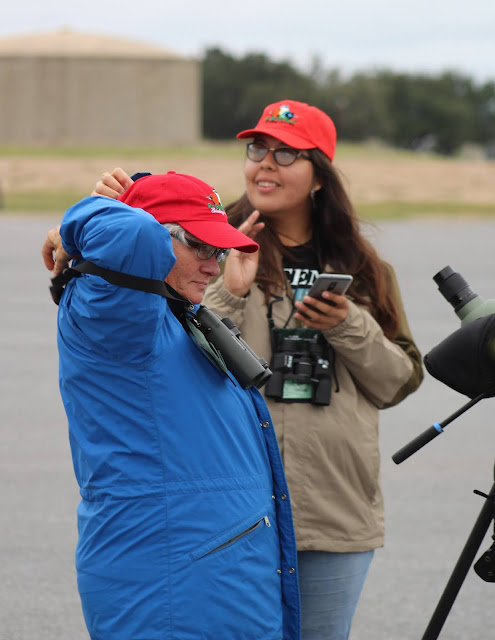

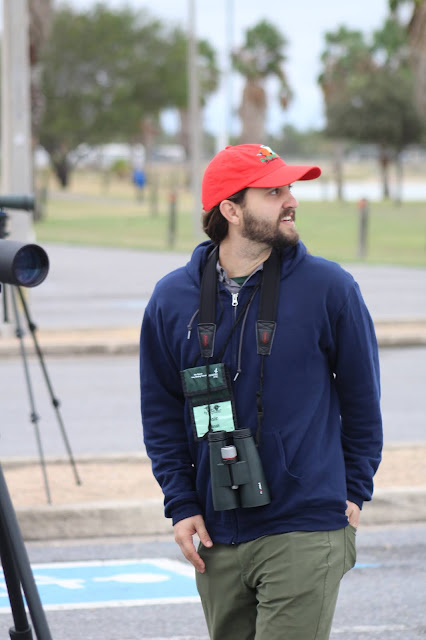



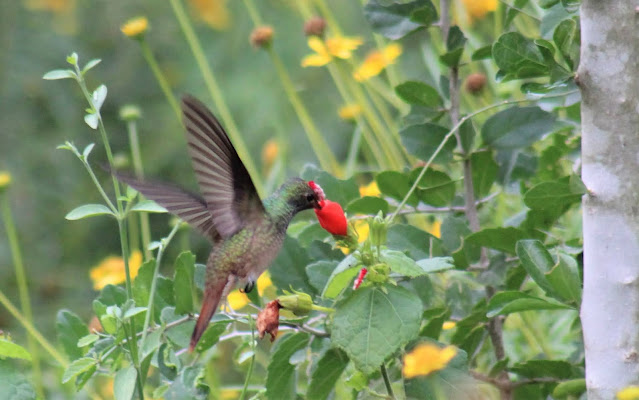
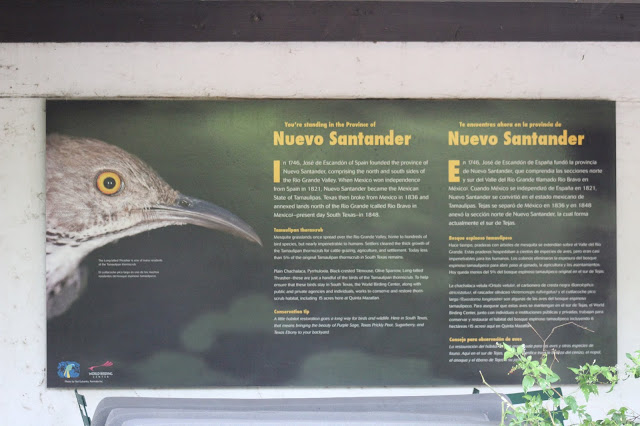













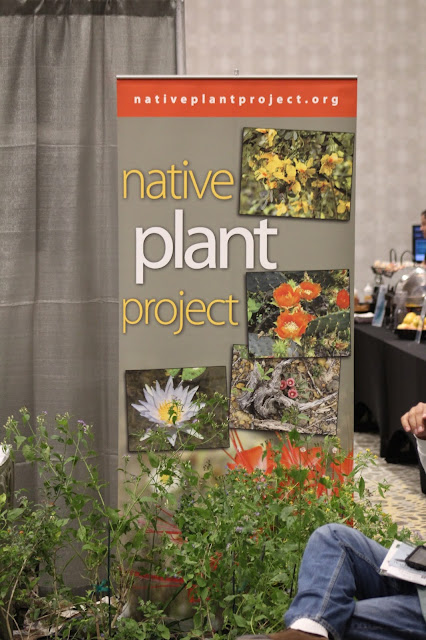

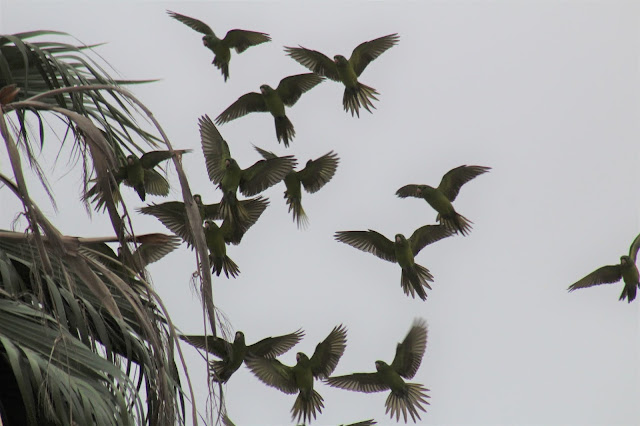









No comments:
Post a Comment